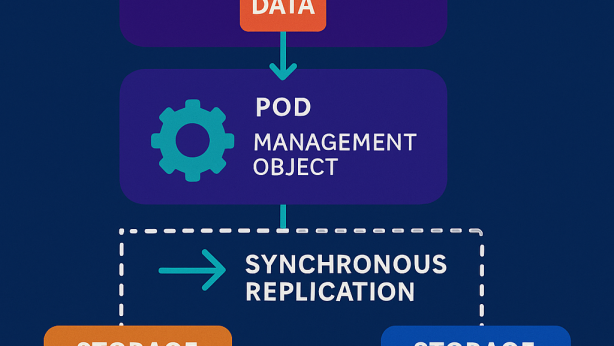MEMORY DEVICE INCLUDING ROW HAMMER MANAGING CIRCUIT, AND METHOD OF REFRESH OPERATION FOR THE MEMORY DEVICE
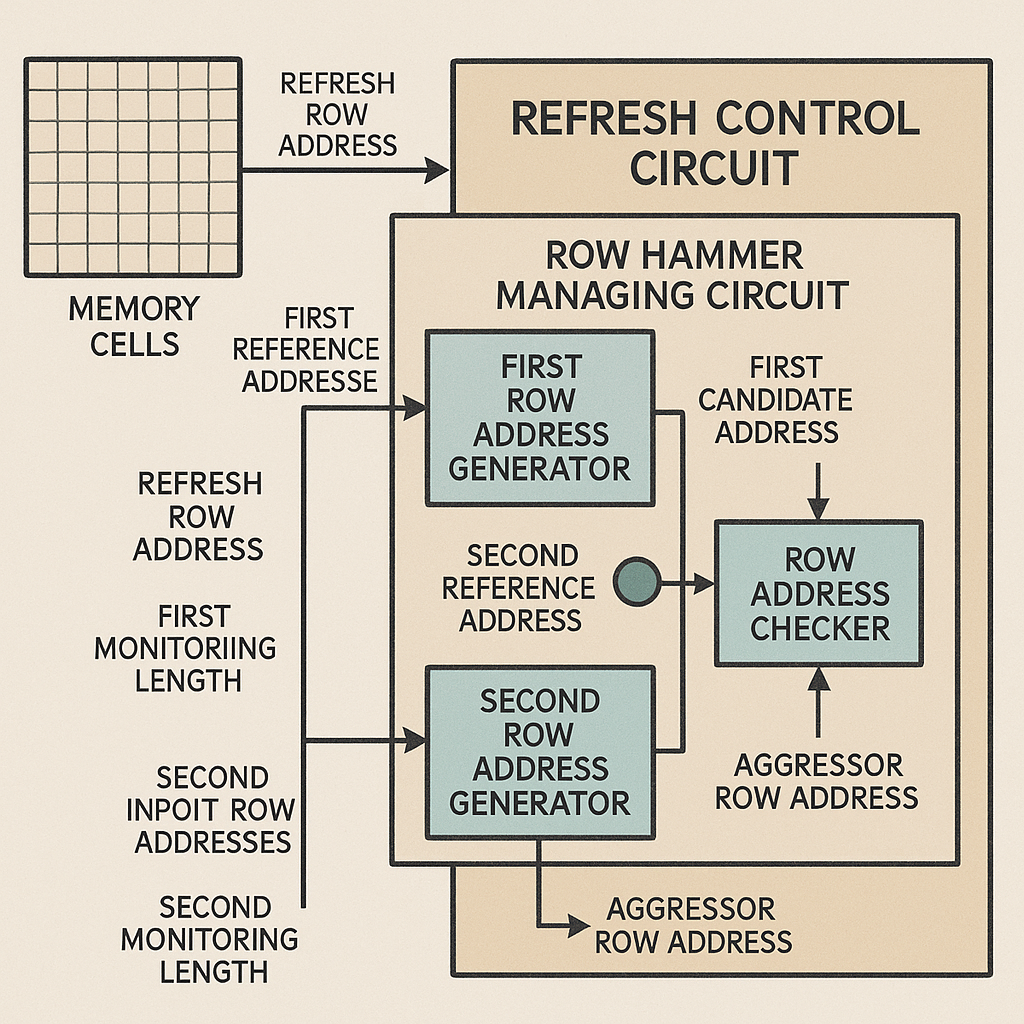
Invented by CHO; SUNGHYE, LEE; KIJUN, Lee; Eun Ae, You; Jung Min, SOHN; KYOMIN, SONG; YEONGGEOL, LEE; MYUNGKYU
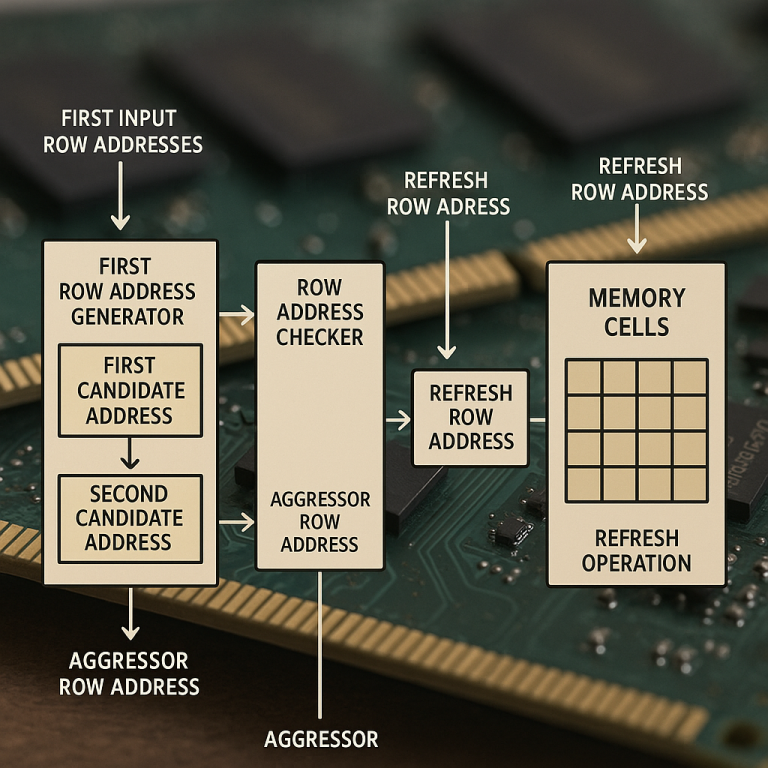
Modern memory devices are fast and powerful, but they also face unique challenges. One of the biggest is the “row hammer” problem, which can make memory unreliable. A new patent application introduces a smart way to fight this problem. In this article, we will break down the background, the science, and the special ideas behind this invention. Let’s explore how this new memory device design could change how computers keep your data safe and sound.
Background and Market Context
Memory chips are everywhere—inside your computer, phone, tablet, and even your car. These chips are like tiny notebooks that store information for your devices. The most common memory used is called DRAM, which stands for Dynamic Random Access Memory. DRAM is fast and can hold lots of data, but it doesn’t keep that data forever. The information in DRAM slowly disappears unless the chip “refreshes” each part regularly, kind of like watering a plant so it doesn’t dry out.
As technology gets better, memory chips get smaller and can store more data. This is great because it means our devices can run faster and do more things at once. But, as these chips get smaller, some new problems show up. One of the biggest is called “row hammer.”
Imagine a huge row of dominoes standing in a line. If you tap one domino over and over, the shaking might cause dominoes next to it to fall, even if you never touch them. In memory chips, if you keep asking for data from the same row many times very quickly, it can accidentally change the data in the rows next to it. This is not supposed to happen, and it can lead to errors or even security problems. Hackers have even used row hammer tricks to break into computers by changing bits they shouldn’t be able to touch.
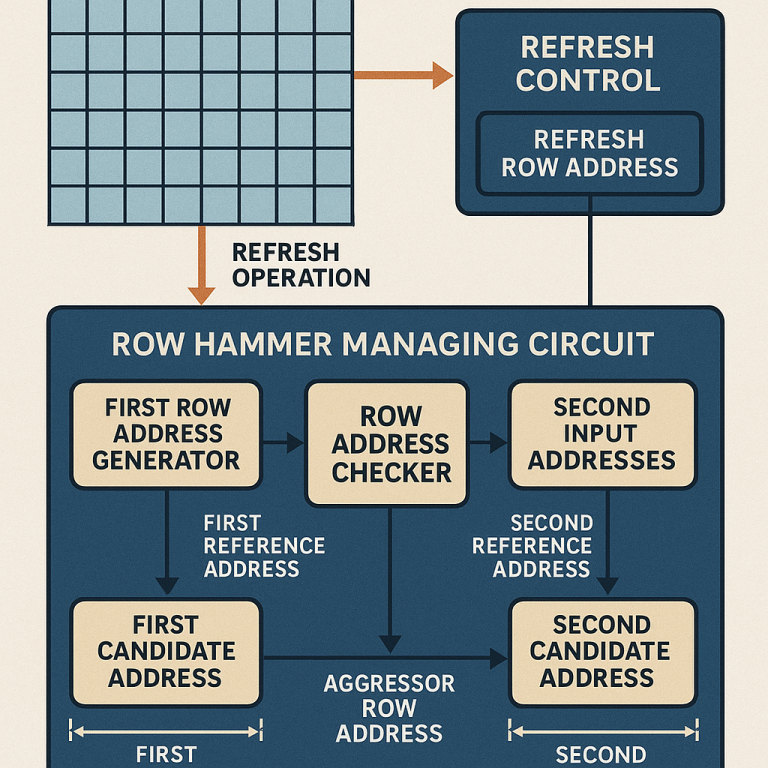
To stop this, memory makers use special tricks called “refresh schemes.” These schemes tell the chip to check and fix any changes caused by row hammer before they become a real problem. But as chips get smaller and faster, the old ways of stopping row hammer are not always good enough. Sometimes they slow things down, or they don’t work as well as needed. The market needs new ideas that can keep memory chips safe without making them slower or more expensive to make.
This is where the new patent comes in. The invention describes a better way to watch for row hammer problems and fix them quickly and efficiently. This could help memory makers build chips that work faster, last longer, and are more secure—exactly what everyone wants in today’s digital world.
Scientific Rationale and Prior Art
Let’s take a closer look at why row hammer happens and how experts have tried to stop it before.
Inside a DRAM chip, each bit of data sits in a tiny cell, which is basically a small bucket holding an electric charge. The chip reads data by checking if the bucket is full or empty. But these buckets are very tiny and close together, so if you keep opening and closing one row of buckets, the buckets next to it can get disturbed. This is the “row hammer effect.”
For a long time, chip makers tried to solve this by making the buckets bigger or putting them farther apart, but there’s only so much room on a chip. As chips got denser, the problem got worse. So, engineers started using “refresh” tricks. The simplest one is to refresh all rows more often, but this uses a lot of power and can slow down the whole chip. Some chips use what’s called Target Row Refresh (TRR), where the chip keeps track of which rows are being accessed a lot and refreshes their neighbors more often. This is better, but it’s still not perfect. TRR can miss some attacks, and it needs to keep a lot of records, which takes up space and energy.
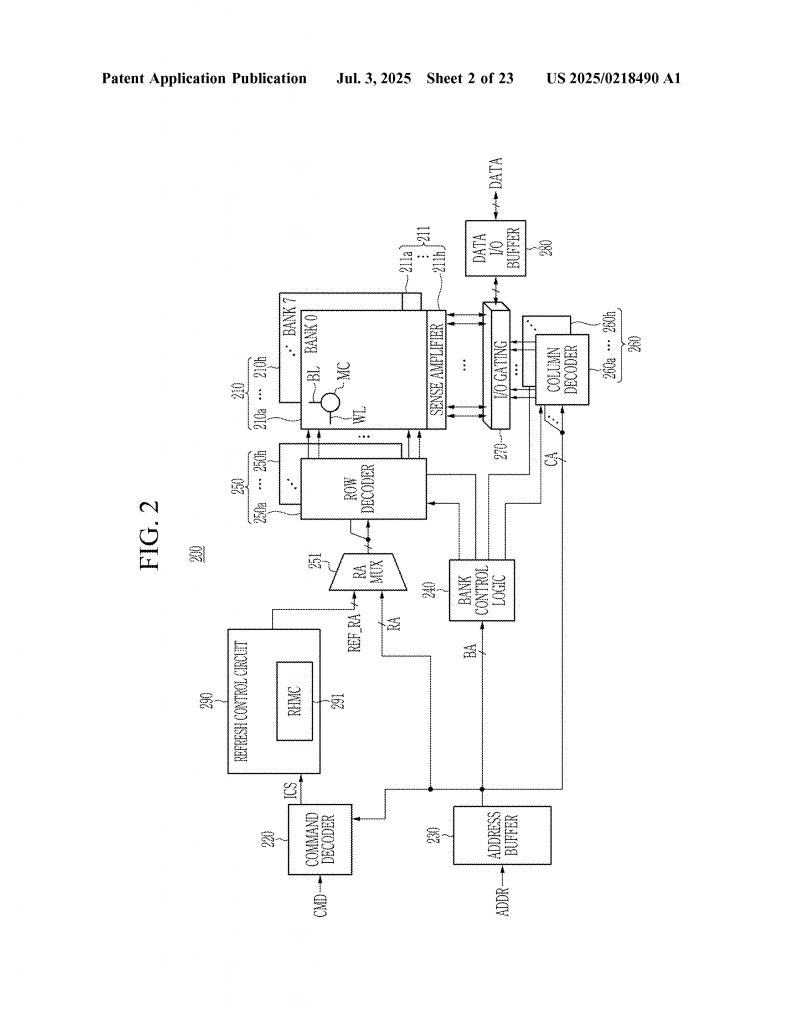
Some companies tried to design chips that could watch every single access to every row, but this was too expensive and slow. Others built complicated circuits that tried to guess which rows might be at risk. These systems often had to make trade-offs: either they were too slow, used too much power, or missed some row hammer attacks.
The scientific challenge is finding a way to notice row hammer problems quickly, with as little extra work as possible, and to fix or prevent them before they cause trouble. The ideal solution would be smart enough to spot any suspicious activity, act fast, and not slow down the rest of the chip. It should also use very little power and not add much cost to making the chip.
The new patent builds on these earlier ideas. It introduces a clever way to watch for row hammer problems using monitoring circuits that look at groups of row addresses over different time periods. By comparing results from different “windows” of time, the chip can spot patterns that look like row hammer attacks and refresh the right rows to keep everything safe.
Invention Description and Key Innovations
This new memory device introduces a smart refresh system to stop row hammer attacks. Let’s break down how it works in simple terms.
Imagine the memory chip is like a big library with lots of rows of books. The invention adds a special “refresh control circuit” that acts like a security guard, walking up and down the aisles to check for trouble. This circuit includes a “row hammer managing circuit,” which is the heart of the invention.
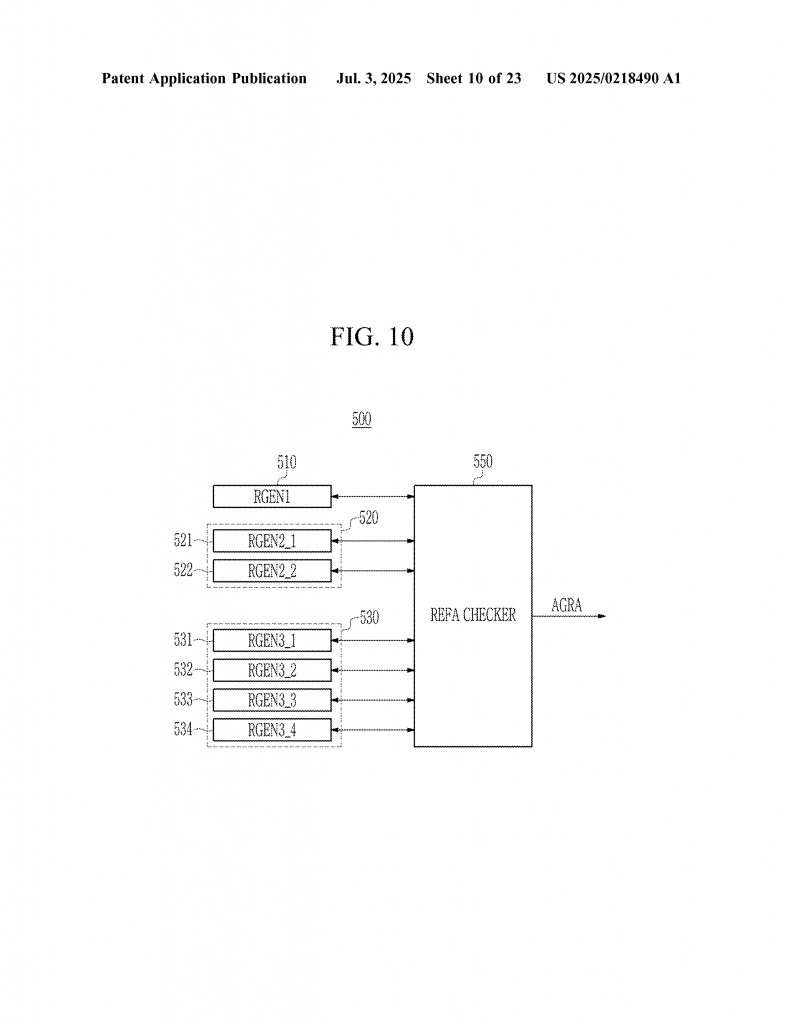
The row hammer managing circuit is made up of a few main parts:
1. Multiple Row Address Generators: These are like little sensors. Each one keeps an eye on which rows (or aisles) are being accessed, but each watches for a different length of time. One watches for a short time, another for a longer time, and maybe another for an even longer time. This way, the chip can catch both quick and sneaky slow attacks.
2. Row Address Checker: This is the brain. It takes the “candidate addresses” picked by the generators and checks if any rows are being hit too hard. It compares the addresses found in different time windows. If the same row keeps popping up as a “hotspot,” or if something unusual happens, the checker knows there might be a row hammer attack.
3. Refresh Logic: If the checker finds a risky row, it doesn’t just refresh that row—it also refreshes the rows next to it. This is like the guard not only checking the noisy aisle but also looking at the aisles on both sides, just in case.
Let’s look at what makes this invention special:
First, using different “monitoring lengths” means the chip can catch both fast and slow attacks. Some row hammer tricks hit a row very quickly, while others spread out hits over a longer time. By having different sensors (row address generators) watching over different periods, the chip can catch both.
Second, the checker compares results from the different sensors. If two sensors looking at different time windows both notice the same row, there’s a good chance a real row hammer attack is happening. If the sensors disagree, the checker updates its reference points and keeps watching. This helps avoid false alarms and makes sure the chip only refreshes rows when it really needs to, saving power and keeping things running fast.
Third, the system can handle more than two levels of monitoring. If a row seems suspicious but isn’t confirmed by the shorter or longer monitors, the chip can bring in a third or even more sensors. This layered approach makes it much harder for any row hammer pattern to slip through. It’s like having several guards, each with a different patrol schedule, all working together.
Fourth, the invention can change its reference addresses dynamically. If it finds that its current way of watching isn’t enough, it can shift its attention to new rows or new patterns. This makes the chip flexible and able to adapt to new row hammer tricks.
The patent also describes how these parts can work together in real chips and memory modules, from individual memory chips to big memory sticks in servers. The invention can be built into the chips themselves or managed by the system’s memory controller.
What does this mean for devices? It means faster, safer, and more energy-efficient memory. Your phone or computer can run longer on a battery, and your data is safer from both random errors and clever attacks. For memory makers, this solution can be added without a lot of new cost or complexity, helping them make better products for everyone.
Conclusion
Memory chips are the backbone of our digital world, but as they get smaller and faster, they need smarter protection. The row hammer problem has challenged engineers and threatened both reliability and security. This new patent offers a clever, flexible answer. By watching memory rows over different periods and having a smart checker to spot trouble, the invention can keep memory safe without slowing things down or using lots of extra power. It builds on earlier ideas but adds important new twists—like layered monitoring and dynamic checking—that make it stand out. If adopted, this technology could help make future devices more reliable and secure, giving us all a safer and smoother digital experience.
Click here https://ppubs.uspto.gov/pubwebapp/ and search 20250218490.

